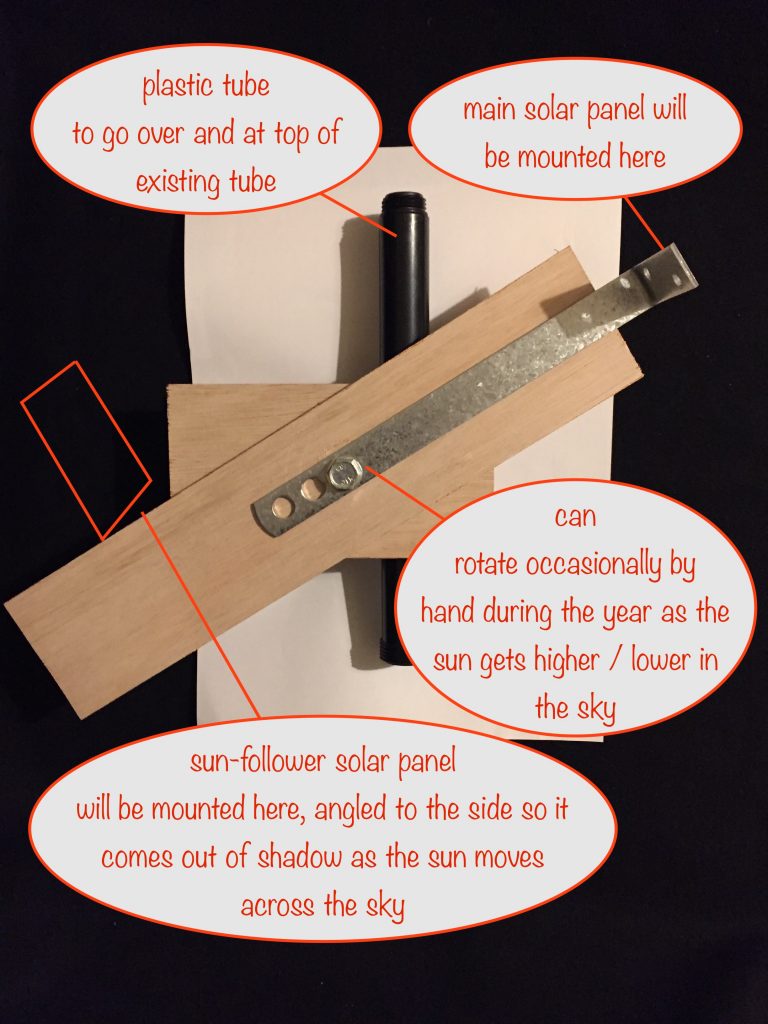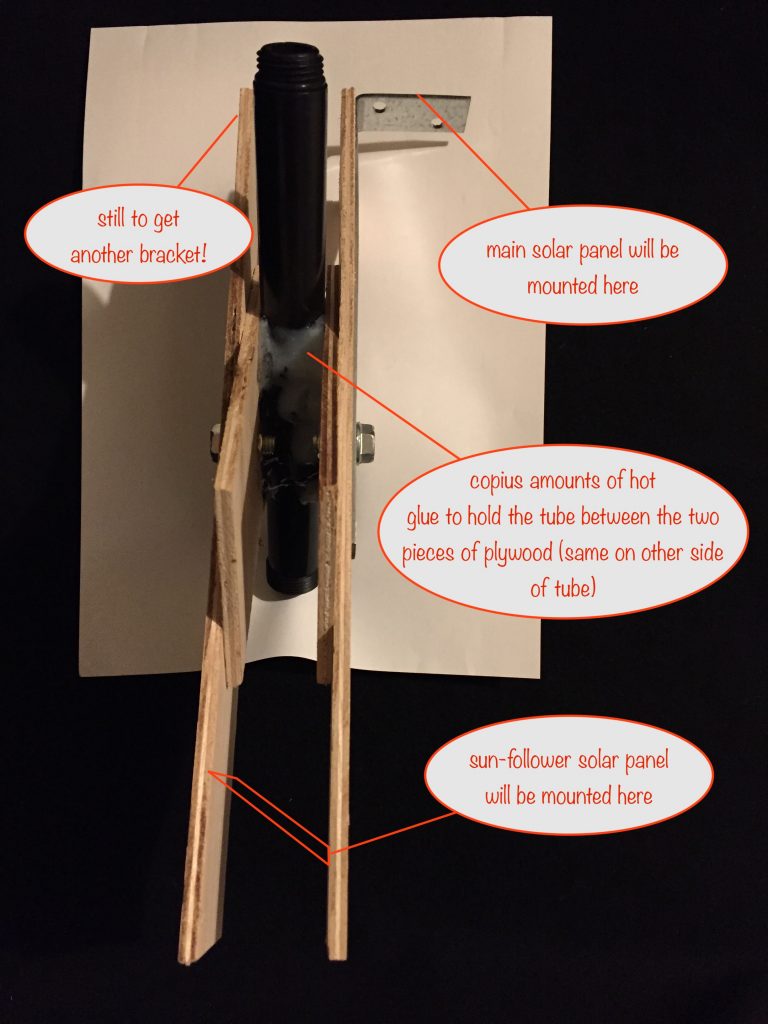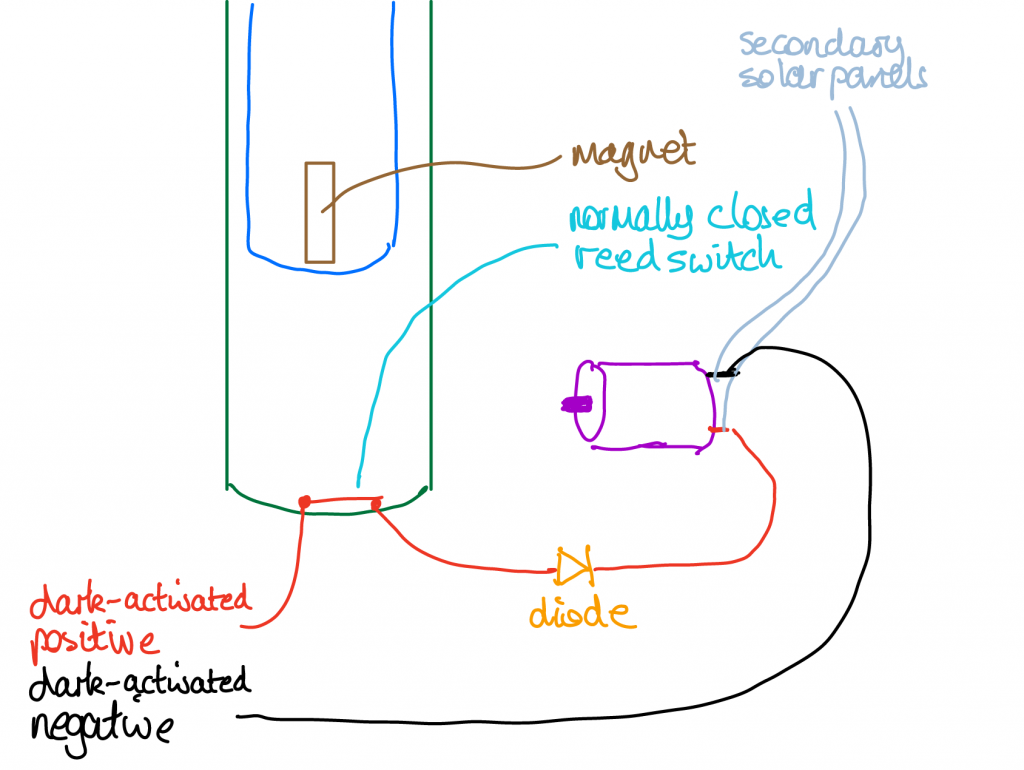I’ve been working out how to mount the solar panels onto the rising and falling tube. Not being very mechanically minded, it’s been a bit of a struggle – hot glue to the rescue!
Rather than work directly with the acrylic tube on my (partially) working prototype, I found another plastic tube that fits nicely on top of it and am working with that.
Here’s a side view showing details of how I’ve constructed it.

I’ve still to get another angle bracket for the other side so you’ll see it’s missing in this top view of the assembly:

Here’s the plan….
With the sun-follower solar panel angled as shown, when the sun moves far enough across the sky so that it’s no longer in the shade of the main solar panel, power will be delivered to the motor.
As the motor rotates, it lifts and turns the central tube. This will put the sun-follower solar panel back in the shade of the main solar panel, which is now pointing directly at the sun. So the motor no longer gets power and rotation stops until the sun moves far enough across the sky again.
Recap
When dusk arrives, the main solar panel stops producing power. When this happens, the battery charging circuit switches off and the battery gets connected to the output.
Whatever else the output may be connected to (string of garden LEDs etc) it will start supplying power to the motor. This will rotate the whole mechanism until the tube reaches the bottom of its travel and so resets the solar panel to the dawn position.
At the same time, as it reaches the bottom of its travel a normally closed reed switch is opened by a strategically placed magnet, turning off power to the motor.

Note that I’ve called the sun-follower solar panel “secondary solar panels” in the sketch.